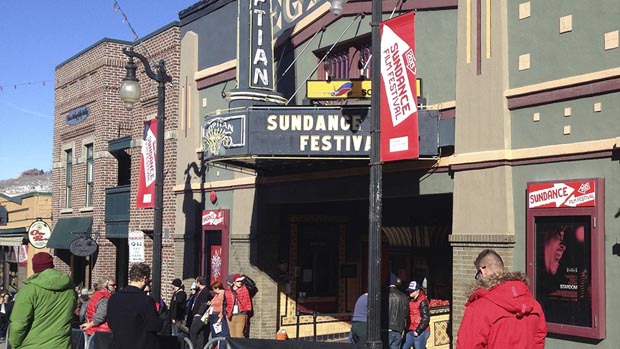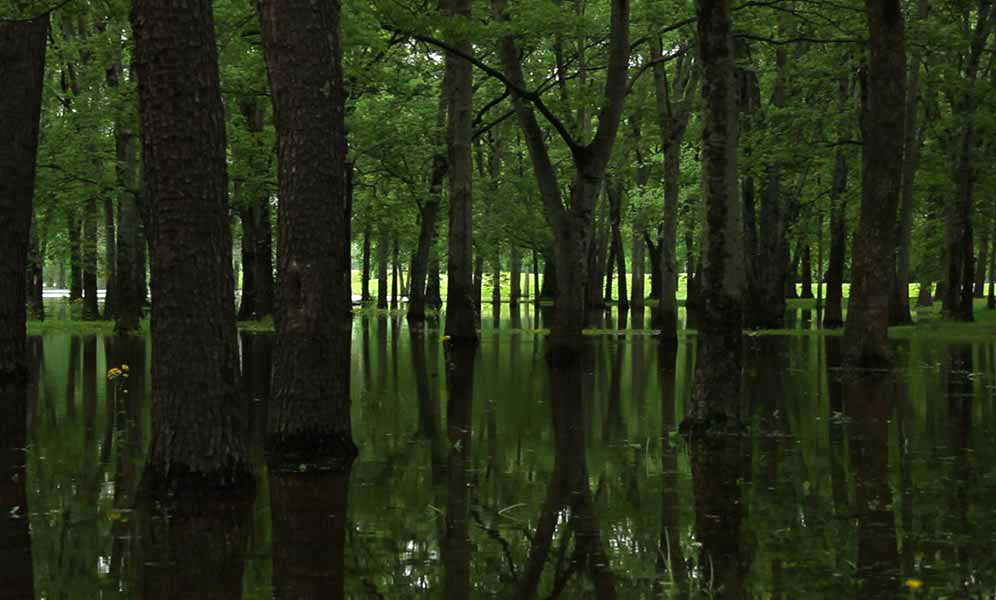 Back to selection
Back to selection
Festival Cinematography Notes – At Sundance, Alexa Rising

The day Sundance began, Daily Variety’s lead article kicked off with: “In this brave new indie world of VOD, shifting release windows, RED cameras [italics mine] and social media marketing…”
I was struck by how little any of this has to do with indie filmmaking alone. As a token of digital revolution, RED cameras are so five years ago. It’s hard to storm the ramparts when last year’s #5 and #7 box office hits were shot with RED Epics (The Hobbit: An Unexpected Journey, The Amazing Spider-Man).
In fact, not only were last year’s #1 and #4 hits filmed with ARRI Alexas (The Avengers, Skyfall), but Avengers DP Seamus McGarvey, true to his indie roots, reached for his grab bag, throwing in Canon 5D Mark IIs and 7Ds and the occasional ARRI 435 loaded with Kodak Vision3 5219. More on cinematography as tossed salad below.
Paragraph two of Variety’s lead began: “When the reels start spinning in Park City…”
No doubt a figure of speech, to be kind. Because there were scant few film reels at Sundance. This year five films at most were projected as 35mm. Everything else, regardless of origination, was digitally projected from a DCP file sitting on a server. The HDCAM cassette, a staple of digital projection at Sundance for a decade, is now required as backup only.
I noticed the same thing at the New York Film Festival last fall, where outgoing programming director Richard Peña confirmed that most screenings were via DCP. A blue-chip festival that skims the crème of Cannes and other international festivals, the NYFF is weighted towards major works of cinema shot on 35mm like Christian Petzold’s Barbara, Christian Mungiu’s Beyond the Hills, Brian De Palma’s Passion, Alain Resnais’ You Ain’t Seen Nothin’ Yet, and Olivier Assayas’ Something in the Air (shot with Aaton 35-III and Penelope).
But a bastion can turn a bellwether, and this year at the NYFF I noted the role of ARRI’s Alexa in Michael Haneke’s Amour, Roger Michell’s Hyde Park on Hudson, and David Chase’s Not Fade Away. Likewise, RED’s One MX in Abbas Kiarostami’s Like Someone in Love and the Taviani Brothers’ Caesar Must Die — at 81 and 83, their first digital film — and RED’s Epic in Robert Zemeckis’ Flight. Then there was Barry Levinson’s The Bay, an eco-horror romp made with “21 different types of video cameras, including iPhones.”
When revolution goes mainstream, whither Sundance?
In a Sundance blog two years ago I tapped RED One as camera of the moment, the one with the most influence on indie cinematography at that year’s festival. Last year in this magazine I singled out Canon’s 5D Mark II as casting the longest Sundance shadow. This year — not to the surprise to anyone paying attention — the “It Camera” at Sundance has to be ARRI’s Alexa.
Let’s look at the numbers. From the Sundance catalogue, I counted 116 new feature-length films. Drawing on multiple sources including asking the filmmakers themselves, I’ve done some accounting.
First off, film, a little wheezy, is not dead. Like last year’s Sundance Grand Jury Award for Drama winner, Beasts of the Southern Wild, this year’s winner, Fruitvale, was shot on Kodak Super 16mm negative using an ARRI 416. Same is true of two other notable dramas at Sundance, Shopping and Lovelace (the latter directed by doc stalwarts Rob Epstein and Jeffrey Friedman). Ironically, given its heroic role in popularizing Super 16, Aaton is represented by only a single short.
In terms of 35mm origination, five films were shot using Panavision cameras, including Don Jon’s Addiction, Two Mothers, and The Spectacular Now, and six with various Arricams, including Kill Your Darlings and Ain’t Them Bodies Saints.
By my count, then, that brings the total of dramas shot on film to fourteen, at least nine of them on Kodak.
So it would seem that films like Fruitvale, which won the Audience Award too, continue to rely on film for that certain artisanal je ne sais quoi. Notably, there were no documentaries shot on film. Perhaps it’s fair to say that film is dead where docs are concerned.
I count 24 films shot with Alexa, including Blue Caprice, Jobs, Afternoon Delight, and Prince Avalanche.
I count 26 films shot with RED cameras, about half with the One MX (Disney lampoon Escape From Tomorrow, World Cinema Grand Prize Drama winner Jiseul), and half with Epics (Concussion, Waldo Salt Screenwriting Award-winning In a World…, the documentary Twenty Feet From Stardom).
Escape from Tomorrow, with its stolen Disney locations, illustrates another trend, the ready mixing of disparate camera technologies. Folded into RED footage is Canon 5D Mark II footage, no doubt to facilitate “looking like a tourist” while filming. Watch the film and see if you can tell what’s what. Hint: a fool’s errand.
Speaking of Canon, I count 12 films, all documentaries, predominantly shot with Canon cameras, most of them with the Canon 5D Mark II. Exceptions to the 5D include, using Canon’s new C300, Lucy Walker’s The Crash Reel and parts of Life According to Sam, and using the 7D, Which Way Is the Front Line from Here? The Life and Time of Tim Hetherington and Who Is Dayani Cristal?

Indeed, it was Dayani Cristal director and co-cinematographer Marc Silver who, upon accepting his award, exclaimed from the stage, “I want to thank whoever invented the Canon EOS 7D. I wouldn’t be standing here if it weren’t for that!”
Momentary personal rant: I’m surprised Sundance gives cinematography awards, as they no longer deem cinematographers important enough to be listed in the Sundance catalogue along with director, screenwriter, and cast.
Another example: the initial 2013 Sundance press release announcing this year’s winners lists the celebrity presenter of the Cinematography Award for World Cinema Documentary along with the director of the winning film, Who Is Dayani Cristal? — but doesn’t mention the cinematographer(s) who won the award! Ditto for cinematography awards for U.S. Documentary and World Cinema Dramatic.
Director, writer, cast only… you’d think this is theater, not cinema.
(Why is one person per production traditionally called “cinematographer”? Hint: it isn’t the director.)
When did Sundance decide to promote “above the line” only? Is it really appropriate to appear to encourage Hollywood’s caste system when so many low, low-budget Sundance films are made on the backs of crew, who too often sacrifice their time with little pay? What happened to indie filmmaking being about collective effort?
No mention in the Sundance catalogue of editors either, even for documentaries. Yes, there are two editing awards for U.S. and World Cinema Documentary (none for drama), but it smacks of a Pyrrhic victory if no one knows who you are.
Rant over. Back to cameras:

I count 16 films, 12 of them documentaries, shot on Sony cameras, mostly F3s and EX3s, including festival favorites Valentine Road, God Loves Uganda, Cutie and the Boxer, Manhunt, and After Tiller. Only the documentary Fire in the Blood used an F900. How the mighty have fallen.
Seven films were shot on a variety of Panasonic cameras, only one of them with the once-dominant, ENG-style Varicam. Shane Carruth’s visually trippy Upstream Color, which won U.S. Dramatic Special Jury Award for Sound Design, was shot using a GH2 DSLR. The documentary Blackfish was one of three films shot with a large-sensor AF-100 or AF-101, although as with many films this year at Sundance, other cameras were used too, including a Canon 5D Mark II.
One documentary, The Moo Man, was shot using an ENG-style, shoulder-mounted JVC GY-HD110 with 1/3-in. CCDs. Shocking how fast a low-cost darling becomes old-hat.
14 docs and dramas — I couldn’t figure out which camera, but they’re all digital. Two more films, a doc and drama, are what I call tossed salad, thoroughly blended in terms of camera technology. American Promise, in the U.S. Documentary section, used a Panasonic DVX100, Sony PD100, Canon 5D, 7D, Rebel T2i, and Vixia, as well as an iPhone, Flip, GoPro, and consumer JVC. S-VHS, in the Midnight section, used a RED Epic as well as an ENG-style Panasonic HPX500, handycam-style Panasonic HPX172, a tiny GoPro Hero 2, and several still cameras with HD capture: Canon 60D, Canon 5D Mark II, and Sony NEX-7.
So why, at Sundance 2013, Alexa rising?
Thanks to RED, we’re well into the era of large-sensor cameras. In today’s second- and third-generation large-sensor cameras, wonky workflows and nontraditional designs are giving way to single start button simplicity, compact solid-state recording, and ergonomics, ergonomics, ergonomics. ARRI’s Alexa leads the way forward in all of these developments, which is why the number of films shot on Alexa at Sundance 2013 has doubled from the previous year.

Meanwhile, in several recent product introductions that will surely impact Sundance 2014, Canon has augmented the C300 with three new Cinema cameras: a low-cost C100, a high-end 4K C500, and a turbocharged 4K DSLR, the 1D C. On the basis of a packed-to-the-rafters screening and panel discussion about the new cameras held at New Frontier by Tim Smith of Canon, these cameras will be very much in evidence next year at Park City. (Speaking of which, Canon’s bash this year replaced Kodak’s now-cancelled annual party as the Main Street draw with the longest line of frozen people waiting to get in.)
Nor will Sony be underrepresented next year. Their recently introduced F5 and F55 digital cinema cameras have drawn many lessons from Alexa, which can only serve to heat the race between Sony and ARRI. Sony’s new cameras are extremely impressive, in a way that can only encourage more high-quality, low-budget filmmaking.
I noticed at Sundance a growing trend toward 2.40 widescreen framing. I spotted, I think, a great use of RED Epic’s HDR (high dynamic range) extended latitude in a scene in Concussion in which one of the leads crosses a dark entrance hallway (interior), then opens the front door of her house to reveal a sunlit street outside–with all the exterior detail intact. I loved the way Manuela Martelli’s skin gauzily glows in Il Futuro (and there’s lots of it), courtesy Alexa, and the exquisitely rich black & white palette produced in both Escape from Tomorrow and Jiseul by the RED One MX.
I also noticed that it’s getting increasingly impossible to guess which camera a film is shot with, never mind whether or not it has been digitally originated. Film grain used to indicate film origination and blown highlights meant digital, but Super 16-originated films can look grain-free these days, while digital cameras pull in more and more highlight detail with each passing year.
So perhaps in the run-up to 4K capture, we’re approaching a point where all motion imaging technologies are getting so good, it no longer matters as much which one we choose to use… ?

I will tell you the film I enjoyed most at Sundance: Stephen Badger’s documentary about legendary FAME Recording Studios in Muscle Shoals, Alabama, titled simply Muscle Shoals, which must have been programmed at the 11th hour and 59th minute because it wasn’t listed in the Sundance catalogue. (What section was it in?) It couldn’t have been a lick better.
Its gumbo is thick. A tragic, vengeful main character, founder Rick Hall, worthy of Shakespeare, making music of the gods: “Brown Sugar”, “When a Man Loves a Woman”, “I Never Loved A Man the Way That I Loved You”, “Mustang Sally”, “Tell Mama”, “Kodachrome” … Aretha, Duane, Dylan, Jagger, Richards, Paul Simon, Jimmy Cliff, Etta James, Wilson Picket. A furious tale captured with soulful cinematography and editing that, together, dig so deep in the swampy mud you’ll be elbowing catfish. I’m from that part of the country, I know where that music comes from, and so will you after seeing this film, which scores on every level.
Whatever camera Badger used was exactly the right one.
